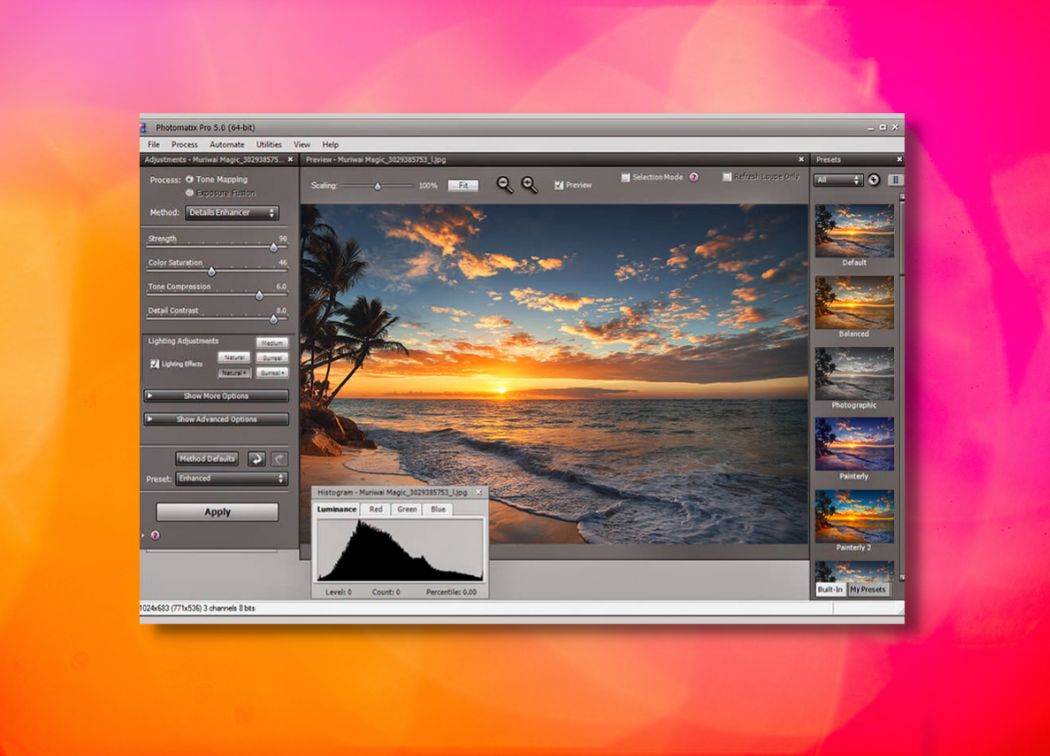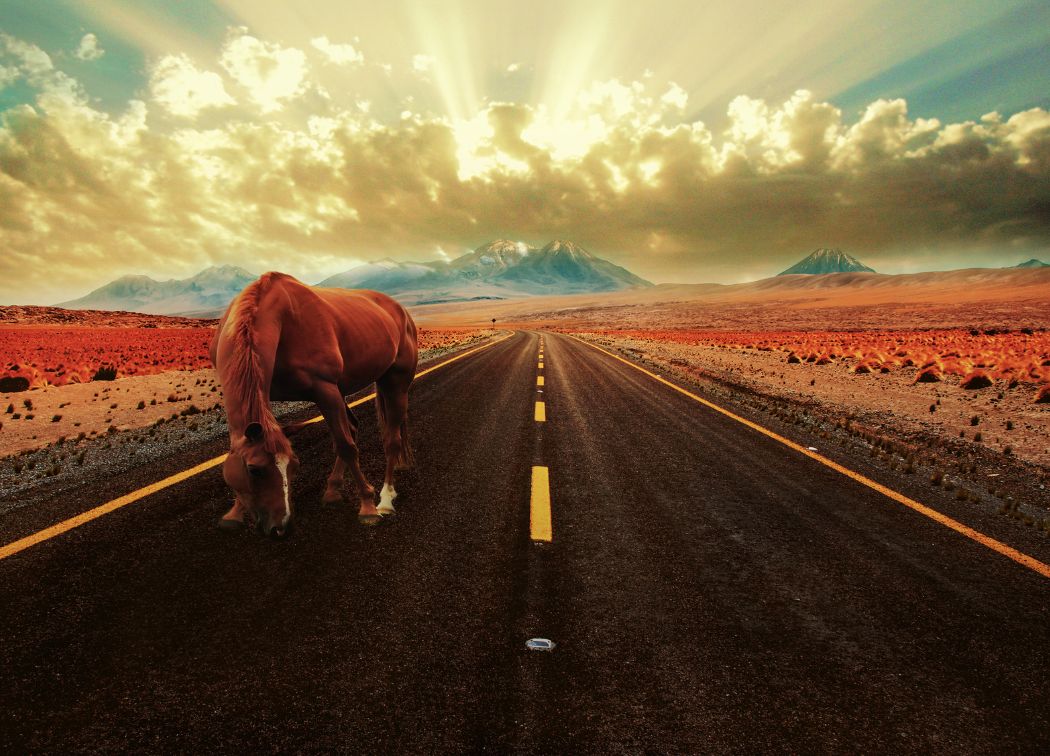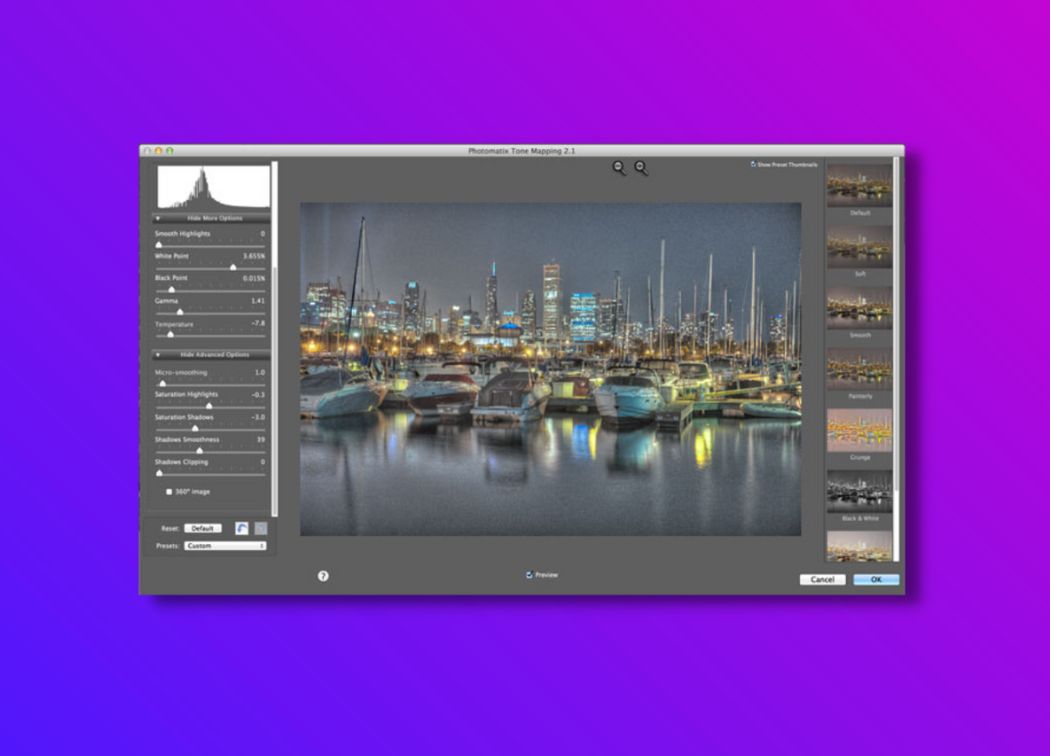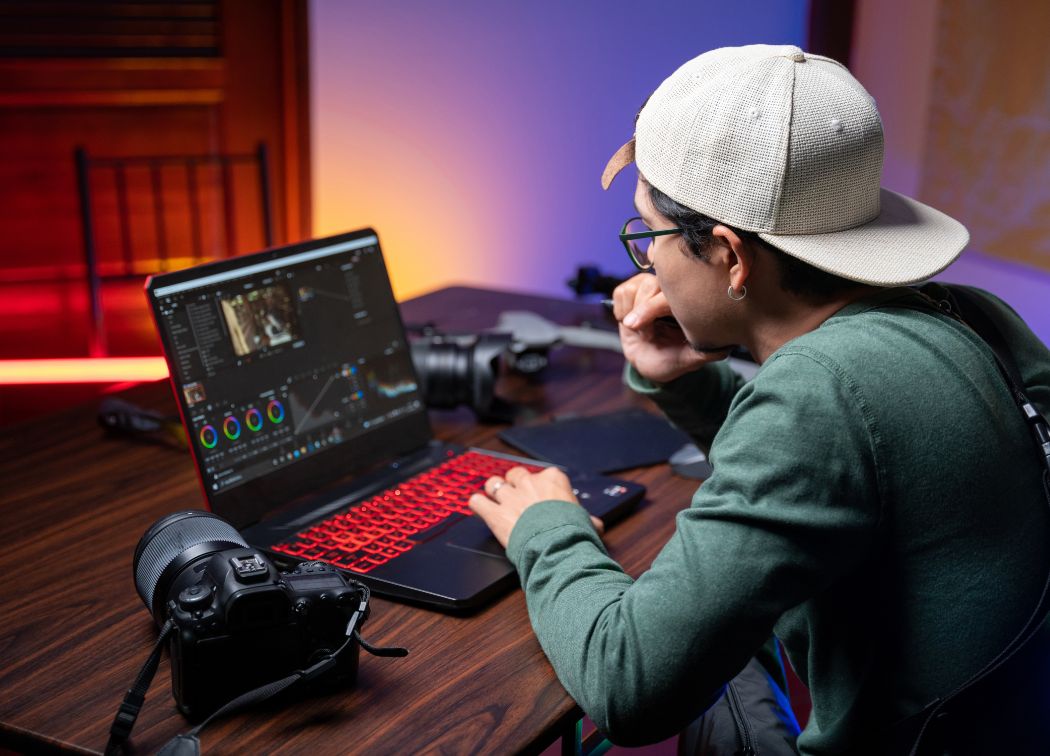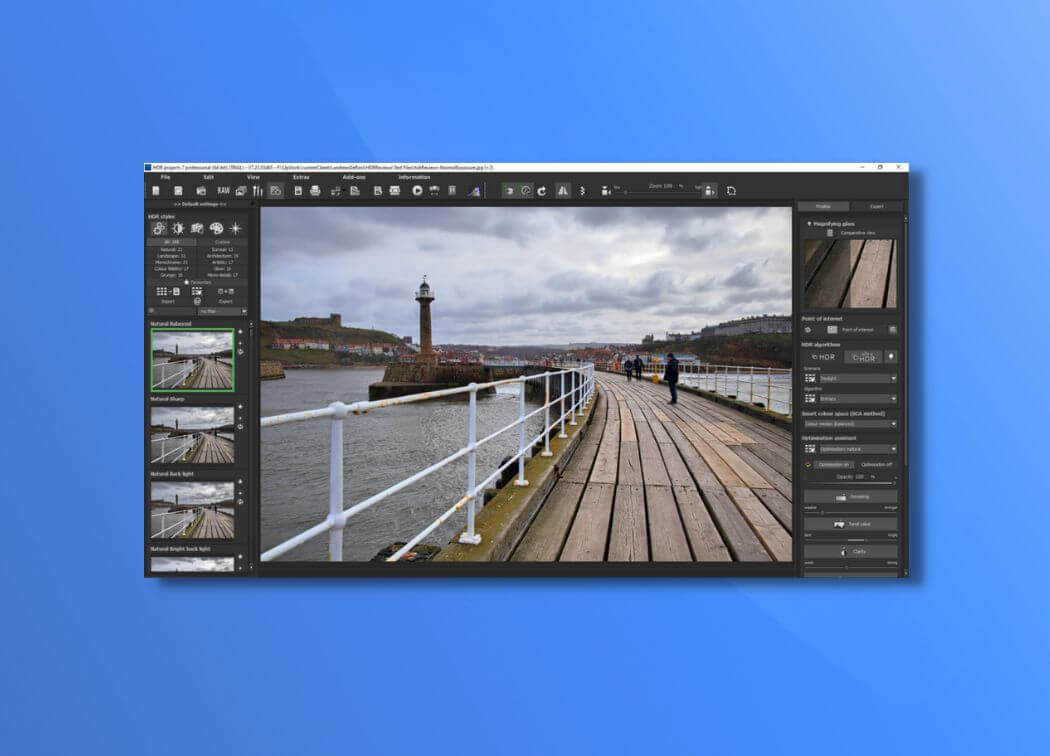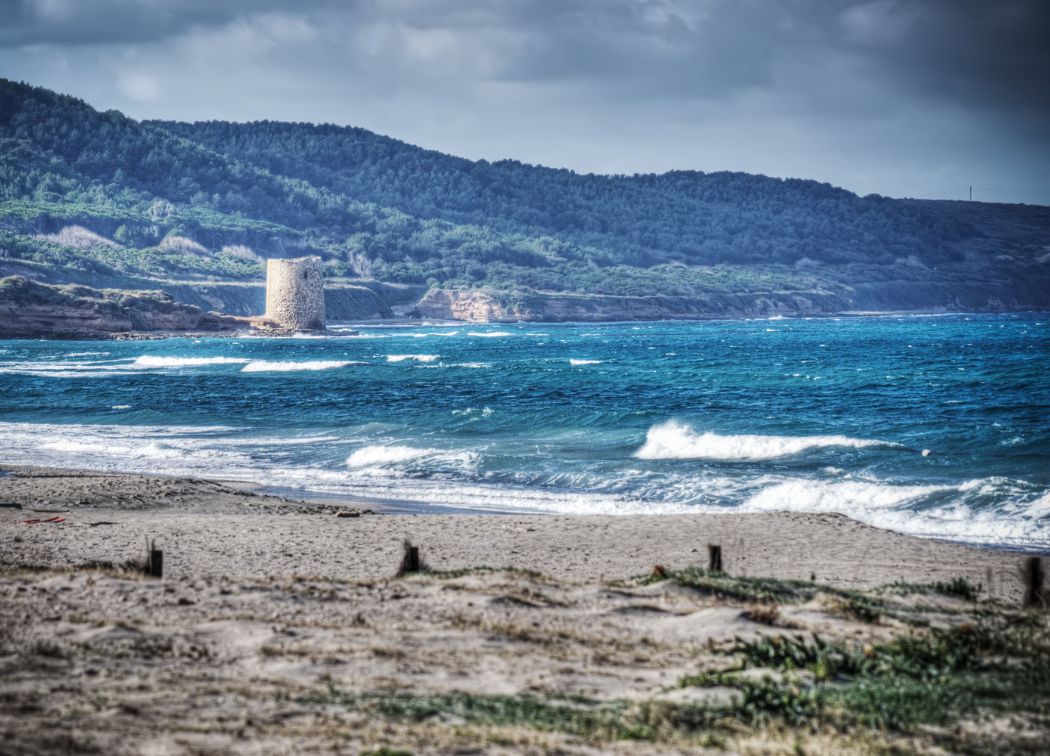HDR photography is a specialized method of taking photos that is becoming more and more popular among photographers who deal with landscapes and real estate.
HDR architecture shots can often be seen posted on social media, and they have a certain look to them that is not attainable with a normal photo. That is mainly due to the fact that such HDR images have more dynamic range than a normal photo would have.
If you’ve been asking yourself, “What does HDR mean?”, then you’re at the right place. Let’s take a look at HDR photography in detail and help you understand what exactly is HDR.
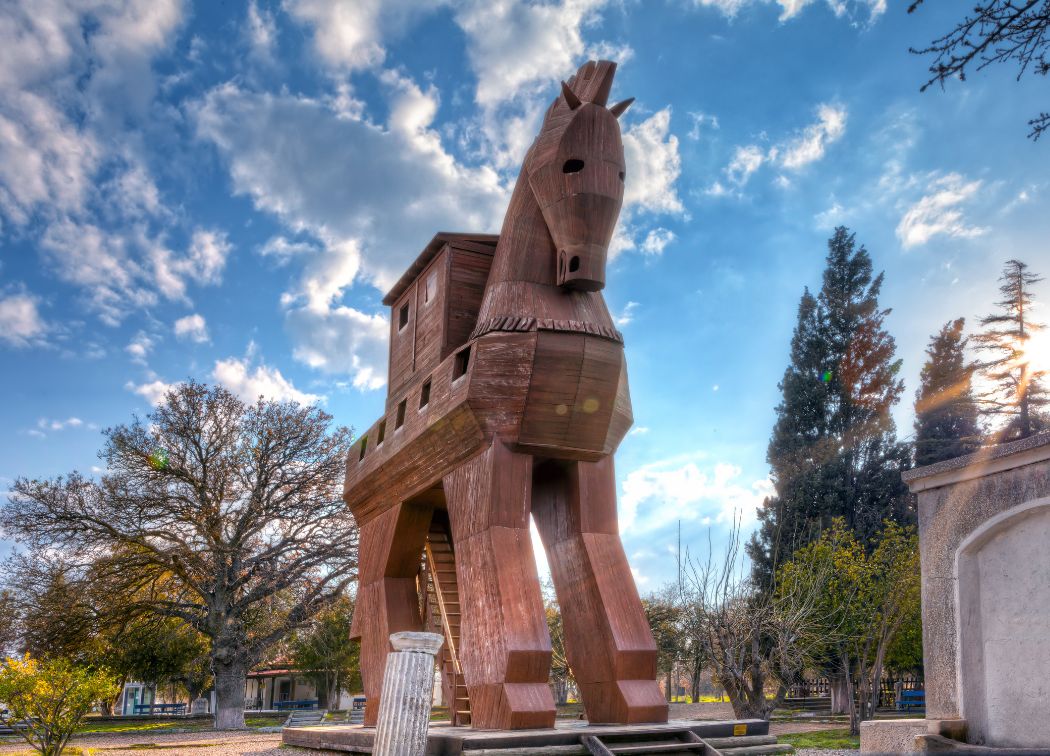
What is Dynamic Range and HDR?
To answer what is HDR, you need to first need to know what is dynamic range. The dynamic range of a photo, in simple terms, is the range of captured light in a photo from the darkest shadows to the brightest highlights. Every camera has a different capacity of capturing dynamic range in a photo.
Smaller sensor cameras often don’t have a great dynamic range, which is why you might have noticed that your phone’s camera tends to make the sky look completely white if you expose your photo for a more darker part of the scene.
On the contrary, if you expose for the sky and get all those details in the photo, the shadowed parts of your scene might come out black. A camera with a high dynamic range does not have this problem, at least not at this severity.
Larger sensor cameras perform better at capturing more detail in the different spectrums of light captured, but they’re also not perfect at it.
That is where HDR, or High Dynamic Range photography, comes in. HDR images are created through a photo-merge process whereby multiple images of the same scene, taken at different exposure settings, are combined to make one photo with more dynamic range.
These different exposure settings can be determined manually or via exposure compensation in your camera. So, dynamic range photography, therefore, takes multiple exposures and combines them into one which allows you to decide how much detail is being shown in your final HDR photos as far as the highlights and the shadows go.
How to Set Your Camera for HDR
If you’ve wondered about the need for an ‘HDR camera’ for your HDR photos, there’s no need to do so. You don’t need a specialized HDR camera to practice dynamic range photography.
All you need is a camera, even if it’s the one on your phone. All you need before changing the settings is to frame up your shot and keep your camera in place so that all exposures align perfectly with each other. This is why a tripod is highly recommended for HDR work.
To set up your camera for shooting HDR photography, there are different things you can do:
Use Auto Exposure Bracketing
Auto Exposure Bracketing, or AEB, is a process by which your camera can automatically set the exposure for the photos you want to take for your HDR photo merge process.
On most cameras, AEB works in values of 3 and 5 – meaning the camera will take either 3 or 5 different exposures that you can turn into HDR photos. AEB is a great way to let your camera do all the work while you focus on another core aspect of HDR photography – the composition.
Use Manual Exposure Bracketing
If AEB is not your thing and you just can’t trust your camera enough, you can make the different adjustments to the exposure values yourself. Simply take a photo exposed for the highlights, one for the shadows, and one somewhere in the middle.
The more exposures you take, the more flexibility you’ll have later in HDR software. Auto exposure bracketing will save you time, but adjusting the settings manually will give you more control.
Use Exposure Compensation
If you don’t want to use AEB but also don’t want to change each setting yourself, you can simply use the exposure compensation setting on your camera to make the photo brighter or darker.
If you’re asking yourself, “what is exposure compensation?”, it’s basically you telling your camera that it’s okay to expose the photo a little darker or a brighter than normal. The camera will then change its settings by itself.
Use HDR Directly on the Camera
There are so many people who wonder, “what is HDR on-camera?”, and the answer is simple; it’s your camera’s built-in HDR processing system.
What on-camera HDR does is combine three or five photos that the camera automatically takes after changing the exposure for each shot and give you a jpeg image at the end that has more detail than a regular photo. It’s usually doesn’t create great results, but is helpful in learning how HDR photography essentially works.
How to Merge Brackets
So now that you have your brackets and the answer to “what does HDR mean?”, it’s time to use a photo merge app to combine the images into one highly editable HDR one.
This is perhaps the most crucial part of HDR photography, as you need to have the best HDR software at your disposal to create great HDR images. While there is plenty of free HDR software also available, most of it is good enough only for basic photo merge processes and not much editing.
Anyway, here are the steps you need to follow with most free HDR software or a paid editor if you’re confused about how to merge photos:
- Open up your HDR software program.
- Import your brackets into the program. In some of the best HDR software programs, you might be able to simply drag and drop images to import them.
- Now let your HDR software do its photo merge magic. Again, if you’re using the best HDR software available, you’ll probably end up with a perfectly aligned final photo that you can edit further. If your photo merge software does not have automatic anti-ghosting features, make sure the brackets are aligned and there are no weird edges around any part of your photo.
- Once you have your high dynamic range photo in front of you, use the various settings and presets in your HDR software of choice to achieve a natural look for your scene.
Remember that when using a photo merge software that doesn’t allow further editing but is only focused on merging photos, you should take your HDR images into a proper image editor to make the best of all the information you have in that one file. Otherwise, the results of your HDR photography might not be very good.
And just like that, your question, “what does HDR mean?” has been answered. It’s not that complicated, really. All you need to do is take different exposures of the same scene and learn how to merge photos to get highly editable HDR photos.
When working with HDR photography, you should always shoot in RAW. This is important because HDR images, to be made spectacular, need to be edited after the merging process. If you take photos in jpeg, the results will not nearly be as great as they could be when taking RAW format exposures.
When you combine various RAW files into HDR images, not only do you get the extended high dynamic range but you also get the inherent power of a RAW file, allowing you to make non-destructive edits which are sometimes crucial for making a great HDR.
Cases and Reasons for Using HDR Photography
So now that you better understand what dynamic range photography means, in what cases can you use it to your advantage? The two main genres of photography where a high dynamic range is crucial are landscape photography and architectural photography.
Both HDR architecture photos and HDR landscape photos benefit from as much information about light as you can get. The more exposures you merge using a photo merge app, the better your HDR photos in both genres can be.
HDR in architecture photos is great because you cannot always control the lighting, especially if you’re outdoors. HDR helps a lot in such a situation because you then don’t have to choose between crushing the blacks hence losing details of your building or blowing out the highlights and making the sky look white.
Exterior HDR architecture photos are not the only kind you can take using multiple exposures, or exposure bracketing. You can also use HDR photography to bring interior shots to life.

